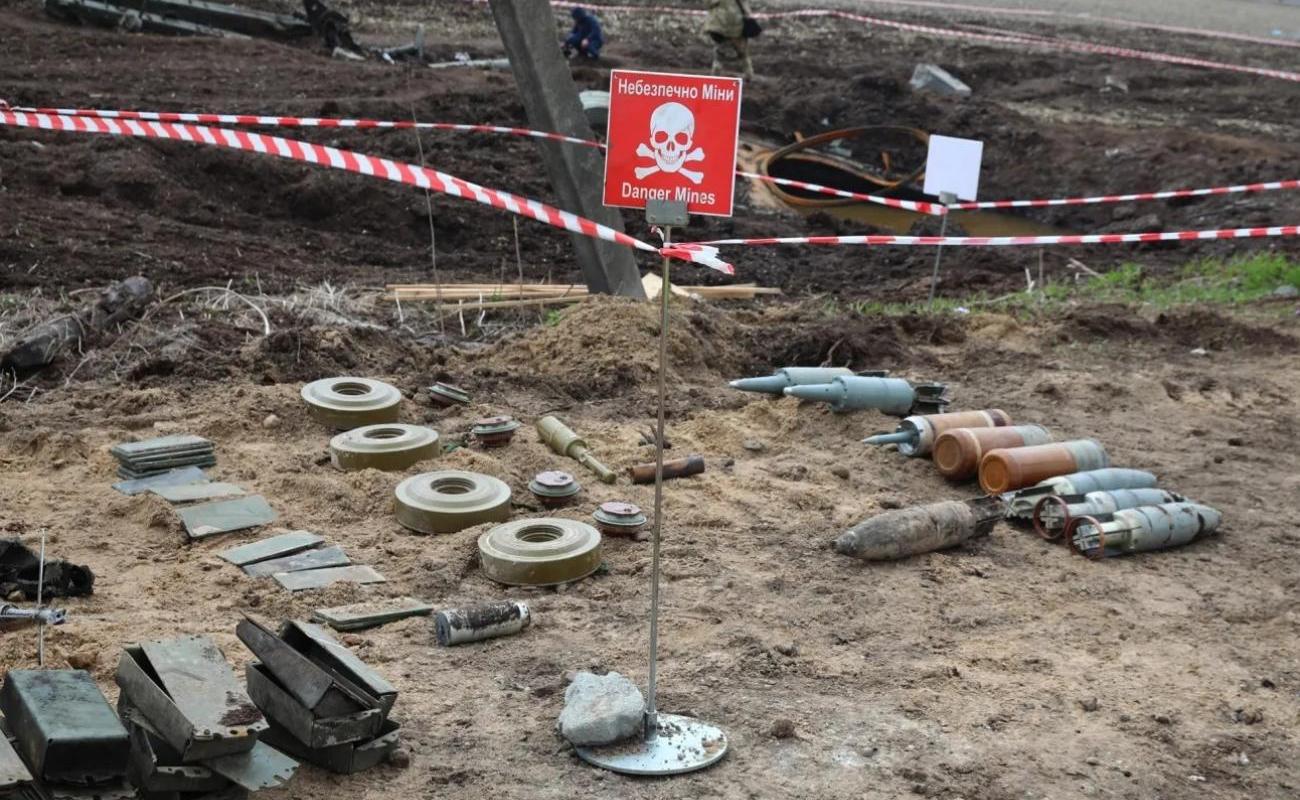From mines to harvest: Scale of demining challenges in Ukraine in numbers - expert

Return to life: $30 billion and millions of hectares that must feed the world again. Why investments in demining are not expenses but a key element of Ukraine's recovery and global food security.
Before the full-scale invasion, Ukraine fed 400 million people worldwide and supplied agricultural products to EU countries, North Africa, and Asia, providing about 10% of global grain supplies. In 2021, Ukraine was the second-largest grain exporter in the world by volume, second only to the United States. Revenue then amounted to $12.5 billion. The war changed everything. Due to occupation and mining, one-fifth of all agricultural lands in Ukraine remain inaccessible for cultivation, amounting to about 6 million hectares. It is critically important to return them to use as soon as possible. Ukraine is actively and persistently working on this with the help of international partners.
The scale of challenges is striking
According to the Ministry of Agrarian Policy and Food of Ukraine, in 2024, over 286,000 hectares of agricultural land were demined. In total, since the beginning of the full-scale war in Ukraine, more than 3,100 square kilometers (310,000 hectares) of agricultural territories have been returned to use, of which 225,000 hectares were sown and yielded a harvest.
For example, in Mykolaiv Oblast, the sown area in 2025 is 1.4 million hectares, which is close to the pre-war level. In the Kherson, Kharkiv, Sumy, and Zaporizhzhya oblasts, demining is also ongoing with a special priority on fields. But there is still a lot of work ahead. In total, 138,500 km⊃2; potentially remain contaminated with explosive objects, which is over 22% of the country's total area. According to the World Bank's estimate, about $30 billion is needed for the complete demining of Ukraine's territory.
Invisible consequences
Mines and unexploded ordnance not only threaten the lives of farmers but also force agrarians to abandon certain crops — for example, root crops that require deep soil cultivation — or change the type of equipment, which increases costs and reduces efficiency.
In addition to mines, the war leaves less visible but no less dangerous traces — changes in the physical and chemical characteristics of soils. Explosions disrupt the soil structure, creating craters, reducing water retention capacity, and, most importantly, contaminating the land with heavy metals, residues of explosives, and fuel and lubricant materials. This increases the risk of erosion, reduces fertility, and threatens long-term degradation.
In the context of climate change, additional changes in microclimate due to landscape devastation only complicate the return to effective agriculture.
The future of demined lands
Given these challenges, the issue is not just demining but also a comprehensive approach to land restoration. Demining is just the beginning. The next step is the strategic use of cleared territories. State policy must consider several key areas:
- Cadastral inventory — to know exactly which lands are suitable for cultivation.
- Prioritization of use: some areas — agricultural production, others — solar stations, others — nature conservation zones.
- Support for farmers — from compensation for demining and affordable insurance to agrochemical soil rehabilitation programs.
- Partnership with communities and businesses — because without their participation, recovery will remain only on paper.
Climate change adds another layer of complexity. Over 3.5 years of full-scale war, the climate in many regions of Ukraine has changed significantly. We are already observing this now — for example, during this spring or last year's hot summer. Crops that were sown in 2021 may no longer yield the expected results in 2025 or may not be suitable for cultivation on the same lands at all. If we aim for the most efficient use of demined territories, state policy must include environmental and educational programs for farmers adapted to new climatic conditions. The Ministry of Agrarian Policy should develop a strategy for long-term climate forecasting and scenario planning so that agricultural producers have access to up-to-date information, can adapt to changes, and maintain the competitiveness of their farms.
The Kyiv School of Economics' Agrocenter calculated that non-technical survey of potentially dangerous territories costs an average of $6 per hectare, explosive detection costs over $3,000 per hectare, and clearance costs up to $30,000 per hectare. Thus, the total cost of clearing Ukrainian fields can reach $10-15 billion, not including expenses for agrochemical restoration, infrastructure, new equipment, and insurance mechanisms.
Driver of development
However, investment in demining is not charity. According to the World Bank and UN estimates, every $1 invested in humanitarian demining brings over $4 in economic benefits in the long term. This includes GDP growth, job creation, and the return of people to communities. Safe and demined territories become the foundation for the economic recovery of communities and the country as a whole.
This multiplier effect is confirmed by international experience: investments in demining quickly pay off through the resumption of production, export of agricultural products, tax revenues, and overall growth of economic activity in cleared territories.
Today, Ukraine has a chance not only to free its lands but also to become a global hub for innovation in humanitarian demining. Companies like GCS Ukraine are already investing in the development of local infrastructure, operator training, service centers, and equipment localization. Over 70 specialized GCS machines operate in the country, and investments in 2023-2024 exceeded 2 million euros ($2.3 million).
This is not just a technical task. It is a new market, a new specialization, a new growth point for the Ukrainian economy. If we know how to fight, we can certainly win in the fight for our land — clean, safe, and fertile.
Demining is not an expense but a strategic investment. Without mine-free land, there cannot be food security, agricultural exports, or the recovery of regions. But if we act systematically, in a few years, Ukraine can not only regain its agricultural leadership but also set a new global standard in humanitarian demining.
